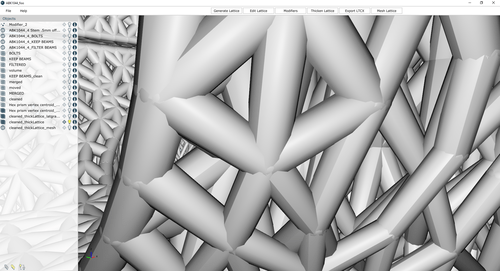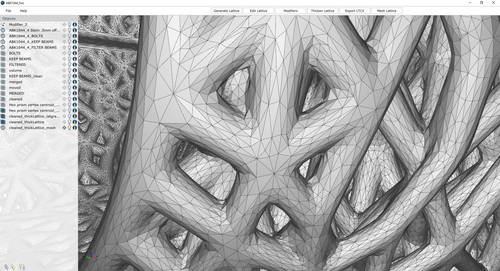Last week, the company released their first big updates to nTopology Element Free. In addition to improving their windowing system and splitting the lattice generation process up into smaller, less resource intensive steps, they also launched their first Element Pro module. This module allows you to import and export lattice objects in a lightweight, XML based file format – the first step towards integrating with your FEA and build processing systems.
What’s in the update?
Element 0.12.7 is now one window. For now, open tools appear as a sidebar on the right side of the 3D viewport, but in the near future they’ll be resized individually to free up even more screen space.
In the back end, nTopology Element represents lattice structures as a list of nodes and a list of beams connecting them. When a thick lattice is created, a diameter is applied to every node, and then thicken the beams such that they have linear interpolation between the thicknesses of the nodes they’re connected to.

Until Element 0.12.7, though, the `Thicken Lattice` tool created mesh (similar to STL/OBJ) objects. Meshes describe lattices as many, many, small triangles, often resulting in file sizes in the hundreds of megabytes. This is okay for printing (most 3D printing build processors take in STL and OBJ files easily) but not very useful while you’re designing the part. So with 0.12.7, nTopology has split these two functions up – allowing you to thicken a lattice without bogging down your RAM and video card. You can experiment all you want with these thickened lattices to see what your part will look like, but only need to convert it to a mesh when you’re ready to print.
While Element Free will remain free to use, a pro version is being rolled out for advanced users that will have a cost attached to it.
The first Pro module offers the ability to import & export lattices in the open source, XML based file format (LTCX). This allows intrepid users to edit lattices outside of Element, and also lets you use beam analysis to analyze your lattice in your preferred FEA package. nTopology are working towards integrating LTCX into the leading AM build processor software, so you can skip the meshing step altogether and print right from a lightweight, stable file format. You can see the full LTCX file specification here.
There will be more updates over the coming month, so keep up to date with everything here.




